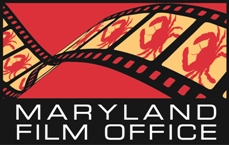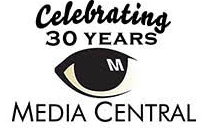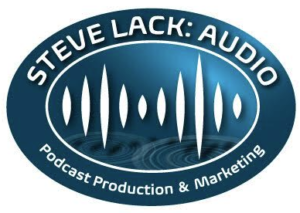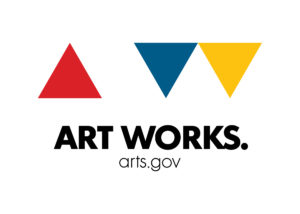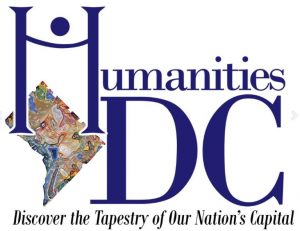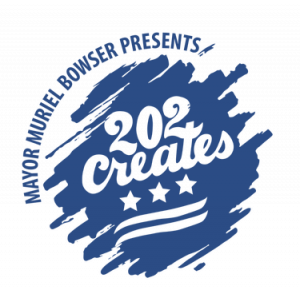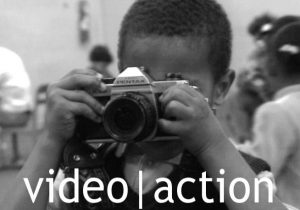
By Lucia Fox-Shapiro
In the early days of cinema, it wasn’t uncommon for women to be found in the editing room. Assembling reels and cutting negatives was tedious, detail-oriented work that often fell to young working-class women. Many female “cutters” during the silent era were unacknowledged and uncredited because the work was seen as purely technical and uncreative. The term “cutter” during this period refers to people who screened dailies with the director and producer to help decide what footage should be used and how it should be cut. Before the Moviola editing machine came out in 1924, film cutters would run the film on reels controlled by hand-cranked rewinds through a small box set on a table and covered with frosted glass. A lightbulb inside the box would illuminate the film, and the cutter would physically cut and glue the negatives back together by hand. Women would facilitate the transition from silent to sound films, and many of the earliest sound films were edited by women. Despite the success of many female editors in the early 20th century, by 1940, the Los Angeles Time would declare “lady film cutters a vanishing profession”, and entry-level positions would start going to more men than women, and it became more difficult for women to become editors.
This is not a complete list of successful and influential women editors. These are merely some women whose work might have gone overlooked or unrecognized amidst the success of many of these films.
Ann McKnight
Ann McKnight was the first woman film cutter in the United States. She cut over 20 films from the 1910s to the early 30s, often working with editor George Marsh. She began her career as an editor at Vitagraph in Brooklyn in 1913, and went uncredited in many of her earliest jobs. She later worked at the Film Booking Offices of America and her last credit was on SMART WOMAN (1931). Little is known about her, but she is often confused with an actress of the same name who was murdered by her husband in 1930.
Viola Lawrence (1894-1973)
Lawrence is considered to be the second woman film cutter after Ann Mcknight, and the first woman cutter in Hollywood. She started working at Vitagraph Studios in Brooklyn as a messenger at age 11. At 12, she was holding title cards. She edited her first film in 1912 and would work with Universal, First National, Gloria Swanson Productions, and Columbia Pictures. She became Columbia’s supervising editor in 1925. She edited Samuel Goldwyn Studio’s first sound film, BULLDOG DRUMMOND (1929), then rejoined Columbia in 1934, where she remained until 1960. She has 101 editing credits, including THE LADY FROM SHANGHAI (1974), IN A LONELY PLACE (1950) and the musical PAL JOEY (1957). She received Oscar nominations for PAL JOEY and PEPE. Larence also edited two of Dorothy Arzner’s films, CRAIG’S WIFE (1936) and FIRST COMES COURAGE (1943). Her last film was the big-budget musical comedy PEPE (1960).
Anne Bauchens (1882-1967)
After working on Cecil De Mille’s WE CAN’T HAVE EVERYTHING (1918), Anne Bauchens was the only person the director would allow to edit his films. She continued working with him until his death in 1959. Bauchens was the first woman to be nominated for the Academy Award for Best Editing for CLEOPATRA (1934) and was the first woman to win the award for NORTH WEST MOUNTED POLICE (1940). Bauchens is credited with editing 41 films directed by De Mille and 20 more films with other directors.
Blanche Sewell (1898-1949)
Blanche Sewell was a film editor for MGM (Metro-Goldwyn-Mayer) from 1925 to 1949. She began her career by assisting editor Viola Lawrence on MAN, WOMAN, MARRIAGE (1921), and started editing her own films in the early 1920s. She has 63 editing credits, including THE WIZARD OF OZ (1939), THE BIG HOUSE (1930), ZIEGFELD GIRL (1941), and THE PIRATE (1948). Sewell edited MGM’s first all-dialogue dramatic film THE TRIAL OF MARY DUGAN (1929). Blanche was Walt Disney’s sister-in-law by marriage.
Dorothy Arzner (1897-1979)
Arzner, more famous as a film director, began her career in the film industry by typing scripts for the Famous Players-Lasky Corporation, which would later become Paramount Studios. She became a cutter and editor in Realart Studio, a subsidiary of Paramount, editing 52 films before being recalled to Paramount to cut and edit BLOOD AND SAND (1922). She left to write scripts for independent companies, and later returned to Paramount and wrote the script for OLD IRONSIDES (1926), which she also edited. She directed and edited the studio’s first sound film starring Clara Bow, THE WILD PARTY (1929). Arzner spent 15 years of her career as a director for Paramount and other studios, and in 1938 she was the first woman to join the Directors Guild of America.
Margaret Booth (1892-2002)
Booth began working at D.W. Griffith’s Los Angeles studio after graduating high school. She began as a film “joiner” and was later promoted to negative cutter. The term “film editor” was first given to Booth by D.W. Griffith. She then worked with John Stahl, and received credit for cutting his films, beginning with THE DANGEROUS AGE (1923). In 1924, Louis B. Mayer merged with Metro-Goldwyn to become Metro-Goldwyn-Mayer. In a staff of 24 cutters, Blanche Sewell was the only other woman. Booth began editing films for other directors, such as Fred Niblo, Robert Z. Leonard, Jack Conway, and Sam Wood. She would later become the supervising editor at MGM from 1939 to 1968. Some highlights of her work include WISE GIRLS (1929), MUTINY ON THE BOUNTY (1935), which was nominated for an Oscar, A YANK AT OXFORD (1938), THE WAY WE WERE (1973) and THE GOODBYE GIRL (1977). Booth was a supervising editor and associate producer on several films for producer Ray Stark, finishing with executive producer credit on THE SLUGGER’S WIFE (1985). Booth received an Academy Honorary Award from the Academy of Motion Picture Arts and Sciences in 1978, making her the second longest-lived person to have been given an Oscar, and the first picture editor to receive an Honorary Oscar. She died in 2002 at age 104.
Verna Fields (1918-1982)
Fields began her career as a sound editor for children’s TV shows, and later transitioned to sound editing films. Her film editing career began when director Irving Lerner recruited Fields to edit STUDS LONIGAN (1960). She was a film editing professor at the University of Southern California in the 1960s, her alma mater. Fields established close ties with directors Peter Bogdanovich, George Lucas, and Steven Spielberg early in their careers and became known as their “mother cutter”. She gained recognition from the films WHAT’S UP DOC? (1972), AMERICAN GRAFFITI (1973) and JAWS (1975), for which she won an Academy Award. She soon was appointed as Vice-President for Feature Production at Universal Pictures, being one of the first women to enter upper-level management in the entertainment industry.
Dede Allen (1923-2010)
Dede Allen was a film editor known for THE HUSTLER (1961), BONNIE AND CLYDE (1967), DOG DAY AFTERNOON (1975), THE WIZ (1978), REDS (1981), THE BREAKFAST CLUB (1985), and THE ADDAMS FAMILY (1991). In 1992, she became the head of post-production at Warner Bros Studio. Allen was the first American film editor to use European techniques, such as beginning a sequence with a close-up or jump cut, and overlapping sound between shots, exemplified in SLAP SHOT (1977). She was one of the first editors to emphasize sound as much as images. Allen is credited to bringing modernist editing to Hollywood, displayed particularly in BONNIE AND CLYDE and THE HUSTLER. She set the standard for rapid editing in subsequent action films, and the American public began to recognize editing as an art form. She was the first editor, male or female, to be credited at the start of a film in BONNIE AND CLYDE.
Anne Coates (1925-2018)
Coates was a British film editor with a career spanning over 60 years. She edited David Lean’s LAWRENCE OF ARABIA (1962), for which she won an Oscar. She has been nominated five times for the Academy Award for Best Editing, including BECKET (1963), THE ELEPHANT MAN (1980), IN THE LINE OF FIRE (1993) and OUT OF SIGHT (1998). Her last editing credit was FIFTY SHADES OF GREY (2015). In 2016 Coates won the Academy Honorary Award, the second picture editor to win this award after Margaret Booth.
Thelma Schoonmaker (1940-)
Schoonmaker edited Martin Scorsese’s first feature film WHO’S KNOCKING AT MY DOOR (1967) and every film directed by him since 1980. She received Academy Awards for Best Film Editing for RAGING BULL (1981), THE AVIATOR (2005), and THE DEPARTED (2007). Schoonmaker met Scorsese at a summer course in filmmaking at NYU. While at NYU, she met filmmaker Michael Wadleigh and would later edit the music festival documentary WOODSTOCK (1970), which was nominated for the Academy Award in Best Editing, and won the award for Best Documentary Feature. Schoonmaker is the second most-nominated editor in Academy Awards history with seven nominations. She is tied with Michael Kahn, Daniel Mandell, and Ralph Dawson for the record of most wins in the category of Best Editing.
Carol Littleton (1948-)
Carol Littleton is a film editor, whose work includes BODY HEAT (1981), Steven Spielberg’s E.T. THE EXTRA-TERRESTRIAL (1982), for which she received an Oscar nomination, and THE BIG CHILL (1983). Littleton won an Emmy Award for her editing on TUESDAYS WITH MORRIE (1999). She is a member of American Cinema Editors, and was a member of the Board of Governors of the Academy of Motion Picture Arts and Sciences from 1999 to 2002, and served as president of the Motion Pictures Editors Guild in the late 1980s. Littleton has had an extended collaboration with the director Lawrence Kasdan, editing nine of the eleven films that Kasdan has directed.
Lilian E. Benson
Benson began working in 1977. She edited two episodes of EYES ON THE PRIZE, which was nominated for an Emmy. She has 81 editing credits, including several feature films directed by African American women, such as Ayoka Chenzira’s ALMA’S RAINBOW (1994), Christon Swanson’s ALL ABOUT YOU (2001) and Debbie Allen’s THE OLD SETTLER (2001). Benson was the first African Amrican woman editor to be a member of ACE and currently serves on their board of directors. She received a Lifetime Achievement Award from the Black Hollywood Education and Research Center in 2017. Benson has edited many documentaries about the experiences of the Freedom Riders, Maya Angelou, John Lewis, and the Alvin Ailey Dance Group.
Sally Menke (1953-2010)
After beginning her career editing documentaries for CBS, Sally Menke had a long term collaboration with Quentin Tarantino. She edited all of his films until she died, beginning with RESERVOIR DOGS (1992). She was nominated for the Academy Awards for Best Editing for INGLOURIOUS BASTERDS (2009) and PULP FICTION (1994). She was a member of the Motion Picture Editors Guild and American Cinema Editors.
Margaret Sixel
Margaret Sixel is a film editor based in Australia, best known for her work on BABE: PIG IN THE CITY (1998), HAPPY FEET (2006) and MAD MAX: FURY ROAD (2015), which won the Academy Award for Best Film Editing, making her the first South African born editor to win an Academy Award. The film won an additional 13 awards for Best Editing.
Kelly Dixon
Dixon began editing professionally in 1990 as an assistant editor on feature films, including GOOD WILL HUNTING (1998) and RESERVOIR DOGS (1992). She is known for her work editing 16 episodes of BETTER CALL SAUL, 27 episodes of BREAKING BAD, five episodes of THE WALKING DEAD, and seven episodes of SHAMELESS. Dixon won an Emmy for Outstanding Single-Picture Editing on BREAKING BAD and has been nominating 20 other times for various editing awards.
Terilyn A. Shropshire
Shropshire has edited five films for Gina Prince-Bythewood including LOVE AND BASKETBALL (2000), THE SECRET LIFE OF BEES (2008), and BEYOND THE LIGHTS (2014). For Kasi Lemmons, she edited multiple films including EVE’S BAYOU (1997), the highest grossing independent film of that year. Additionally, she edited MISS BALA (2019) for Catherine Hardwicke. She was on the editing team for the Netflix mini-series WHEN THEY SEE US, directed by Ava DuVernay.
Maryann Brandon
Brandon is a member of the American Cinema Editors and is a frequent collaborator with J.J. Abrams and Mary Jo Markey. She and Markey were nominated for a Primetime Emmy Award for editing the television series ALIAS, created by Abrams, and they have since edited all of Abrams’ films. Markey and Brandon worked together on STAR WARS: THE FORCE AWAKENS (2015), for which they both were nominated for an Academy Award. Brandon and Mary Jo Markey co-edited Abrams’s MISSION IMPOSSIBLE III (2006), SUPER 8 (2011), and STAR TREK INTO DARKNESS (2013). STAR WARS: THE RISE OF SKYWALKER is currently in post-production.
Mary Jo Markey
Marky Jo Markey, member of the American Cinema Editors society and the Academy of Motion Picture Arts and Sciences, has edited films including THE PERKS OF BEING A WALLFLOWER (2012). She has worked with J.J. Abrams on his television shows FELICITY, BREAKING NEWS, SKIN, and ALIAS, and was a chief editor on LOST. She has worked on all five of his feature films in collaboration with Maryann Brandon. Markey won the Primetime Emmy Award for her work on LOST in 2005. CHARLIE’S ANGELS is currently in post-production and directed by Elizabeth Banks.
This list is merely a highlight of some successful female editors in the history of cinema and is not a complete list. This list, unfortunately, has limited diversity, and we encourage you to send us names of women to add to the list. The list also concentrates on American-based editors and is not meant to slight the amazing work being done around the world since the start of the film industry.
This blog represents a special project conducted by Lucia Fox-Shapiro while an intern at WIFV in the Summer of 2019.
Sources
Imdb.com
https://guardianlv.com/2014/06/how-women-dominate-the-film-editing-world/
https://womenfilmeditors.princeton.edu/
https://www.raindance.org/female-editors/
https://www.ft.com/content/b718ca00-d4b5-11e3-bf4e-00144feabdc0
https://geekandsundry.com/women-in-film-maryann-brandon-and-mary-jo-markey/
https://upclosed.com/people/mary-jo-markey/
https://wfpp.cdrs.columbia.edu/essay/cutting-women/
https://wfpp.cdrs.columbia.edu/pioneer/anne-bauchens-2/
https://wfpp.cdrs.columbia.edu/pioneer/ccp-dorothy-arzner/
http://www.filmreference.com/Writers-and-Production-Artists-A-Ba/Allen-Dede.html
